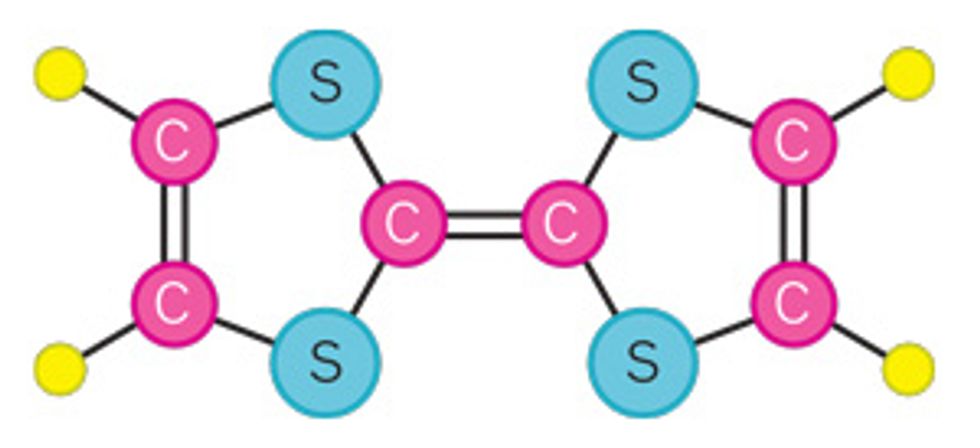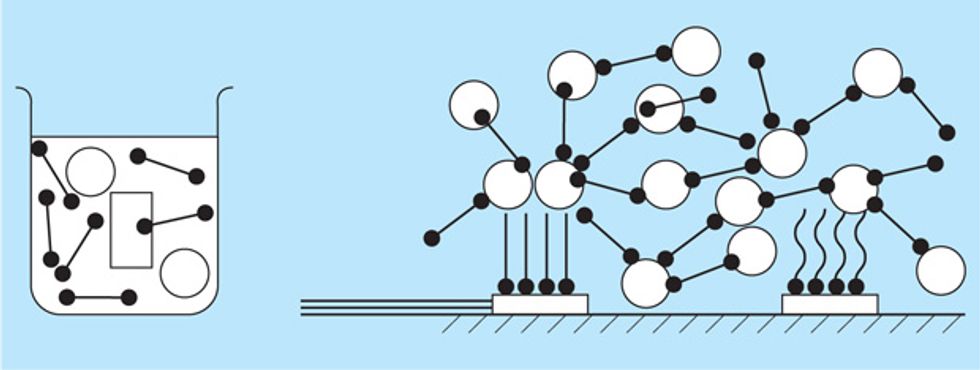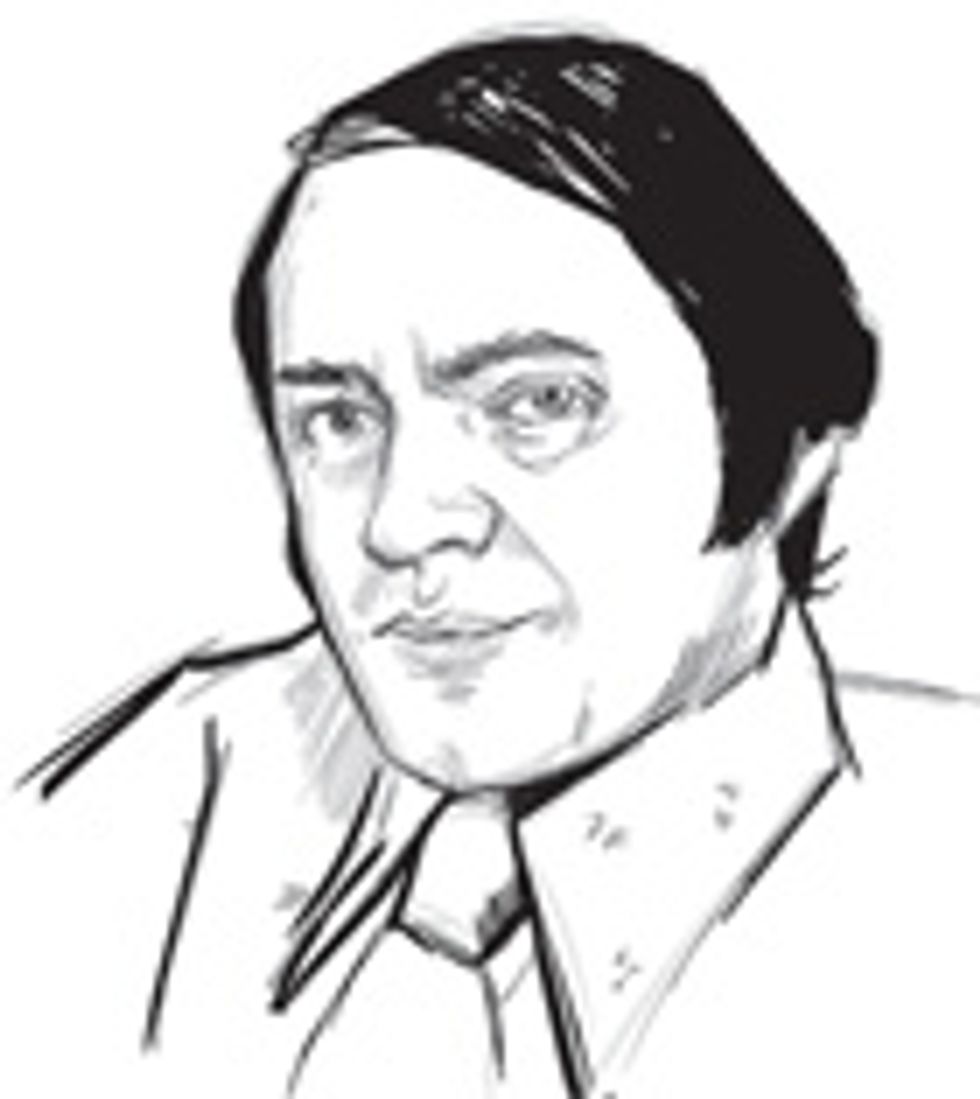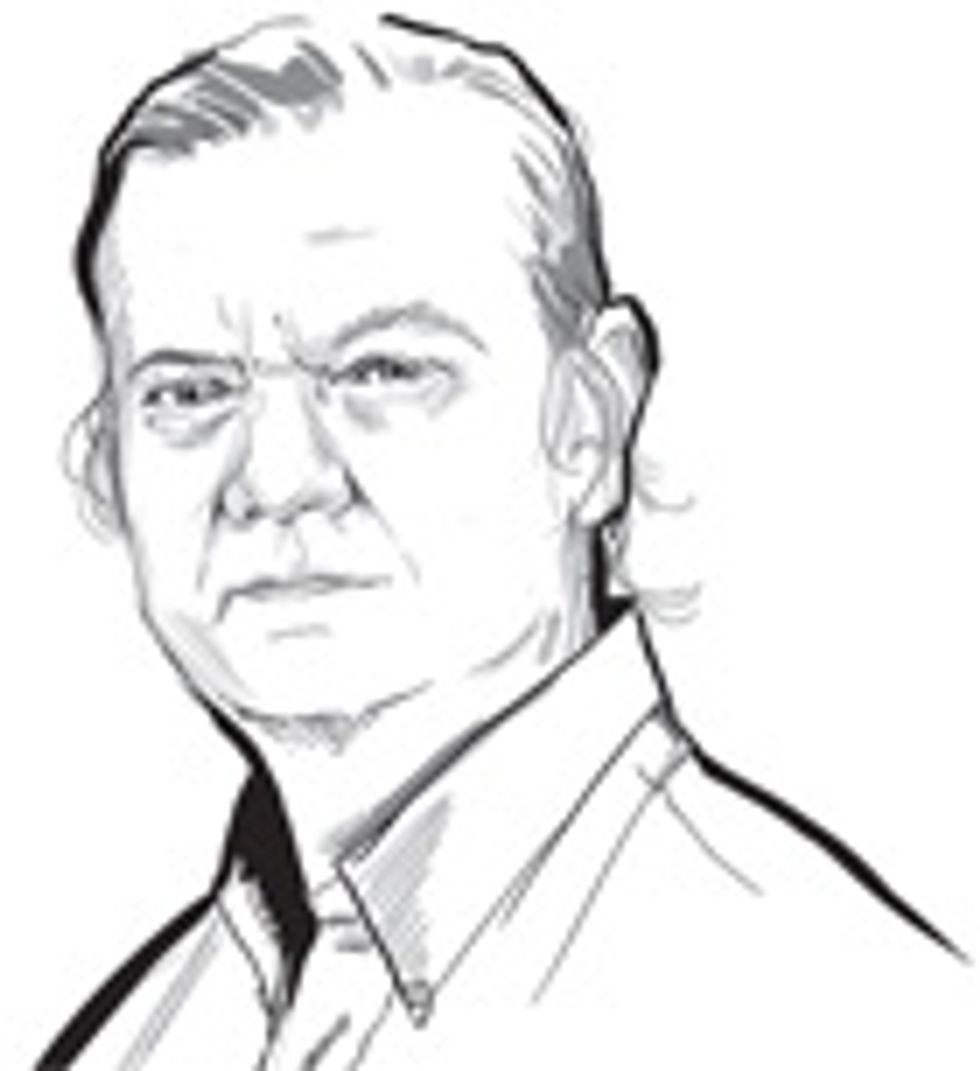Whatever Happened to the Molecular Computer?
Why the tantalizing promise of replacing silicon with molecular components has yet to be fulfilled

Forty years ago, a New York University graduate student named Arieh Aviram opened his Ph.D. dissertation with a bold suggestion: “Taking a clue from nature, [which] utilizes molecules for the carrying out of many physical phenomena, it may be possible to miniaturize electronic components down to molecular size.” What Aviram was proposing was revolutionary: leapfrogging the ongoing miniaturization trend of Moore’s Law by substituting single organic molecules for silicon transistors and diodes.
In a paper written with his thesis advisor, Mark Ratner, Aviram even described a theoretical starting point for such a revolution—a “molecular rectifier” [subscription required], for converting alternating current to direct current.
Aviram and Ratner’s bold idea sank into obscurity. Little wonder: Aviram was still a student, while Ratner was just a few years into his academic career. But in the late 1980s, their paper resurfaced and was taken up by a small and determined band of researchers. It has since been cited more than 3,000 times and today is celebrated as giving birth to the field of molecular electronics, which now seems closer than ever to realizing the vision that Aviram put forward four decades ago.
Bulk ensembles of molecular electronics have made their way into commercial displays, and recent high-profile breakthroughs include single-molecule light-emitting diodes and carbon nanotube transistors coupled to silicon in a monolithic integrated circuit. Other, less flashy but more technically relevant results have come, for example, from Danny Porath and his colleagues at Hebrew University in Jerusalem, who have measured electrical transport in wires made of DNA; such wires are a self-assembled alternative to copper interconnects. Latha Venkataraman’s group at Columbia University has measured single-molecule diodes to a rectification ratio of more than 200 times—a critical step for maintaining a high signal gain as devices shrink. And Christian Nijhuis and his coworkers at the National University of Singapore were able to measure the rectification changes that occurred when they replaced an individual functional group—just a handful of atoms—in a nanometer-size molecule. This is exactly the type of control dreamed of by Aviram and Ratner.
Meanwhile, chip designers face ever steeper hurdles in keeping pace with Moore’s Law. With Intel’s recent announcement that it would delay the launch of its 10-nanometer node—the next milestone along the semiconductor road map—to 2017, the recent successes in molecular electronics look especially timely. After decades of effort, could molecular electronics finally be ready to replace silicon? It’s a tantalizing possibility.
And yet researchers have thought they were on the verge of such a breakthrough before. Indeed, it’s happened three times [pdf]: in the early 1960s (well before Aviram and Ratner’s paper), in the mid-1980s, and again in the early 2000s. Each heady boom was followed by a disappointing bust during which the field had to retreat from its promises in the face of poor results—and, in one case, egregious fraud. Fads in research aren’t unusual, to be sure: Many disciplines have been captivated by a big idea only to retreat from it later. But the story of molecular electronics is special for what it says about the nature of research and progress, and about the human capacity for optimism and hubris.
The two of us view this colorful history from our own perspectives: One of us (Kelly) is a physicist who has done research in molecular electronics; the other (Mody) is a historian who has studied the field as a cultural phenomenon. Our collaboration on this article and on other projects has taught us to celebrate the progress that has been made in the pursuit of molecular electronics but also to approach the field with a healthy amount of skepticism.
Since the late 1950s, circuits for computers and other devices have been made by etching complicated patterns into a semiconductor crystal (usually silicon) in an elaborate and precise process involving dozens of steps. But early on, some people wondered whether a better approach to miniaturization might be to “grow” single molecules that functioned as electronic circuits or components. Such molecules might be faster and smaller than silicon integrated circuits, and they might also be easier to make. Arthur R. von Hippel [subscription required] and his research group at MIT were the first to explore this concept. In 1959, the U.S. Air Force began funding Texas Instruments, Westinghouse, and a few other firms to develop solid-state “molecular” circuits from doped inorganic crystals. While these crystals weren’t molecules per se, they were allegedly designed from the molecular scale up, rather than carved from the macroscale down, like conventional integrated circuits.
Researchers at Westinghouse in particular promised they would soon be able to grow a crystal of germanium that would behave like a complex circuit, but without the need for failure-prone connections between components. (Fashioning the connections between components in silicon ICs was at that time a great technical challenge.) The company’s complete failure to deliver such a molecular circuit—and, in stark contrast, the continuing success of silicon ICs—led to the disappearance of this first wave of molecular electronics by the mid-1960s.
A decade later, Aviram and Ratner initiated a new era of molecular electronics based on organic molecules rather than inorganic crystals. Circuits made from a class of organic conductors known as organic charge-transfer salts seemed amenable to far greater miniaturization than either inorganic crystals or silicon devices.

Aviram and Ratner envisioned their molecule working very much like a semiconductor diode, where one part of the molecule would be an electron donor (analogous to the n-doped region of a semiconductor diode) and the other an electron acceptor (analogous to a diode’s p-doped region). As with a diode, when you put a voltage across the molecule, the bands of the two regions would bend until electrons moved freely from one region to the other; a voltage with the opposite sign, on the other hand, would prevent the electrons from flowing. What’s more, such a molecular diode could potentially be mass-produced with the proven tools of synthetic organic chemistry. As a proof of concept, Aviram and Ratner designed a molecular rectifier—a single molecule into which an alternating current would flow at one end, with a direct current coming out the other. Although their proposal was briefly mentioned in Time magazine, the scientific community showed little interest—that is, until their ideas were taken up in the late 1970s by a chemist at the U.S. Naval Research Laboratory named Forrest Carter.
With his giant beard, booming bass voice, and outsize passion for fast cars and ballroom dancing, Carter was the pied piper who brought together a diverse set of polymer chemists, device physicists, electrical engineers, biotech researchers, futurists, and defense policymakers. He generated publicity with promises of the revolutionary potential of molecular electronics for computing and, in particular, for artificial neural networks that could recognize patterns almost as deftly as the human brain could. The community that formed around Carter’s grand vision didn’t gain much in the way of federal funding, but his followers exchanged ideas more rapidly than they would have in isolation. Meanwhile, well-funded if less ambitious national programs in molecular electronics started to appear in Japan, the Soviet Union, and the United Kingdom.
Despite Carter’s overly optimistic promises, no one managed to synthesize even a single molecular diode or transistor, much less dozens (and certainly not thousands) of them wired together to form a complex circuit. And even as Carter’s detailed descriptions of molecular computers inspired some researchers, they alienated others who wanted tangible evidence for the feasibility of his molecular-electronic visions. As a 1983 report in Chemical & Engineering News [subscription required] put it, “hype seems inevitable for so-called molecular computers. There are claims for the miraculous things they will be able to do…[that] are barely a step removed from science fiction.” By the time Carter died in 1987 at the age of 57, the U.S. molecular-electronics community had gained, in the words of the British physicist Richard A.L. Jones, a “louche reputation.”
Meanwhile, Aviram had quietly continued his research and started organizing a series of conferences on molecular electronics with support from the Engineering Foundation. Though Aviram himself avoided the hype surrounding Carter, his gatherings helped catalyze the next boom in molecular electronics.
Mark Reed, a specialist in microfabrication from Yale, attended one of these conferences in 1991, which that year was being held in the Virgin Islands. Drawn largely by the opportunity to scuba dive, Reed met a synthetic chemist named James Tour (then at the University of South Carolina and now at Rice University), who had come up with a way to synthesize organic molecules that could, at least in theory, function as “molecular switching devices.” But Tour hadn’t yet figured out how to wire his molecules into a circuit to see whether they could indeed switch. Reed proposed a solution: He would use microfabrication techniques to create electrodes separated by a tiny gap, onto which he could pour Tour’s molecules. If just one molecule bridged the gap, any current flowing through the circuit would be measurable.
The Many Characters of Molecular Electronics
Arieh Aviram
His 1975 Ph.D. thesis proposed substituting silicon transistors with single organic molecules.
Mark Ratner
With Aviram, he described a “molecular rectifier” made from organic charge-transfer salts.
Forrest Carter
Taking up Aviram and Ratner’s ideas, he became the field’s charismatic leader in the late ’70s.
Mark Reed
With Tour, he proposed a way to fabricate single-molecule switching devices.
James Tour
He and Reed patented a molecular computer and cofounded Molecular Electronics Corp.
Jane “Xan” Alexander
She oversaw DARPA funding for molecular electronics, which grew to US $15 million per year.
Jan Hendrik Schön
In 2002, his remarkable claims, including a single-molecule transistor, proved false.
Paul Weiss
A collaborator of Tour’s, in 2003 he questioned some of Reed and Tour’s earlier results.
R. Stanley Williams
His group’s discovery of the memristor in 2008 grew out of their study of molecular devices.
Reed and Tour’s research proposal landed on the desk of Jane “Xan” Alexander, a grant officer (and later deputy director) at the Defense Advanced Research Projects Agency. The agency soon funded this work and then in 1998 expanded its patronage through its Moletronics program. Eventually, DARPA’s support of Reed and Tour and their collaborators, and of similarly directed groups at Hewlett-Packard, IBM, Northwestern, Penn State, and elsewhere, grew to about US $15 million per year. Once again, the field was swept up in heady visions of single-molecule devices with complex electronic behaviors. And progress was indeed made in characterizing the electronic properties of single-molecule “components.” Reed and Tour were even optimistic enough to cofound a startup, Molecular Electronics Corp., with several colleagues. In 2000 they filed a patent for a “molecular computer” that would provide a way past the “lithography driven…diminishing returns” of traditional silicon.
But as before, the sweeping promises outran the actual achievements. In 2003, one of Tour’s Penn State collaborators, Paul Weiss, told the journal Science [pdf] that some of Reed and Tour’s earlier results on molecular-electrical properties, such as negative differential resistance, were not as solid as a 1999 article had implied. Another prominent collaboration—between Hewlett-Packard’s R. Stanley Williams and James Heath and Fraser Stoddart, who were both at the University of California, Los Angeles—also faced criticism for claims about the switching behavior of a device made with a layer of rotaxane molecules. Such revelations undermined the field’s credibility to the point that the news story in Science asked whether the field was undergoing a “midlife crisis.”
These missteps were trivial, however, compared with the outright fraud that Jan Hendrik Schön committed at Bell Laboratories. In 2001, Schön had burst onto the scene with a series of high-profile discoveries in molecular electronics, including the field’s holy grail: a single-molecule transistor. Just one year later, that transistor—and almost everything else Schön had claimed to have done—proved utterly false.
Schön’s fraud was disastrous to many in the field. Prominent scientists who had spoken glowingly of the physicist’s results now looked gullible or careless—a damning mark on their reputations. As investors retreated, startups like Molecular Electronics were forced to close their doors. And the field’s leaders either dialed back their rhetoric or abandoned molecular electronics altogether, choosing to transfer their expertise to related but unsullied areas such as designing molecules for drug delivery.
Of course, scientific fraud is not unique to Schön, and so it’s worth looking at the circumstances that facilitated his deception. One obvious problem in hindsight was that the field had not placed a high value on the repeatability of results. Many teams were working with unique molecules that others didn’t have access to and were thus unable to study. As a result, Schön’s spectacular findings went unchallenged for too long. The sole reward for those who did try to chase his phantom discoveries was a loss of their valuable time.
The Schön affair also revealed a failure by too many to heed the old adage “Don’t fool yourself.” Perhaps because of the high commercial stakes or because the field seemed to be moving so quickly during the years of DARPA funding, researchers had no time to dwell on disconfirming evidence. Too many articles presented results in the best light while overlooking observations that didn’t support the authors’ pet hypotheses. For example, some early reports on nanojunctions described astounding device yields of 80 percent. But this figure turned out to be based on the number of nanojunctions that had passed an initial measurement, not on the total number that had been fabricated. The true yield was more like 1 to 2 percent.
Even before Schön’s fabrications came to light, plenty of researchers had agitated for a more cautious approach and shown a willingness to revisit and revise their own results. His defrocking spurred such people to start to change the culture of their field. For instance, researchers finally began running control experiments where they inserted both active and insulating molecules into the inorganic nanojunctions in their devices; that way, they could separate the properties of the nanojunctions from the properties of the active molecules.
At first, such ad hoc changes occurred in an informal way. But true reforms gained more structure and momentum with the creation of the National Nanotechnology Initiative in the United States (and similar programs in other countries) right around the time of the Schön scandal. A multibillion-dollar, multiagency effort, the NNI was created to foster nanoscale research and development. Its members have since provided more than $20 billion in funding. For those in molecular electronics, the program not only offered monetary support at a time when other private and government sources had dried up but also gave access to expensive, specialized equipment and to new collaborators from a wide variety of disciplines.
The NNI’s other gift to molecular electronics was its increased oversight of the research, which put a much-needed check on the field’s tendency to overheat and overpromise. Member agencies of the NNI that run their own laboratories—namely, the Department of Defense, the Department of Energy, the National Institutes of Health, and the National Institute of Standards and Technology (NIST)—now coordinate their results with academic researchers receiving NNI support through the National Science Foundation.
The Naval Research Lab and NIST, in particular, have for more than a decade rigorously attempted to replicate the findings of researchers in molecular electronics, issuing notices when any discrepancies appear. Even as the Schön scandal was unfolding, articles by James Kushmerick and Roger van Zee (both now at NIST) and their coworkers began to clarify and quantify the discrepancies between measurement techniques and between disparate molecular systems. An important lesson from this work was the recognition that results had to describe the synthesis of the active molecule as well as characterize both the inorganic nanodevice architecture surrounding the active molecule and the interaction between molecule and architecture.
In the wake of these reforms have come a series of scientific and engineering successes. Though less heralded—and less expected—than the big promises of the past, these results can be viewed as a quieter fourth boom in molecular electronics.
The effect of NNI’s cross-disciplinary approach is clearly seen in the rapid progress in creating and characterizing devices made from graphene. Such work lies at the intersection of chemistry, device physics, electrical engineering, and surface science. A little over a decade ago, graphene didn’t exist; yet less than six years after it was first isolated, it was the basis for the Nobel Prize in Physics. Whereas in the past molecular electronics meant devices made from crystalline ribbons of germanium, charge-transfer salts, conducting polymers, or carbon nanotubes, today the most promising substance appears to be graphene.
Perhaps the most tangible results from this latest wave of research are new, potentially commercializable devices, such as the memristor crossbar memory, a device inspired by molecular electronics. First developed by Williams’s group at HP and also being pursued at Hynix Semiconductor and Knowm, the memristor owes its “memory” to the generation and erasure of filamentary connections in titanium dioxide and other compounds. (All three of these companies seem to have been leapfrogged by Intel and Micron, which recently announced their similar but nonmemristor 3-D XPoint crossbar memory.) That these traditional materials could be fashioned for such an end was a direct offshoot from their use as the electrical contacts in “molecular” devices—devices that themselves never materialized.

In other areas, better understanding of the chemistry of a “molecular transistor” has translated into innovations in organic light-emitting diode displays. Efforts to fabricate the inorganic components of a “molecular circuit” have led to novel architectures for traditional silicon microelectronics. Investigations of how to marry the organic and inorganic parts of a molecular circuit have spurred advances in “neuronano” research and human-machine interfaces. And because their participation in nanotechnology has brought them in contact with researchers in the life sciences, some people studying molecular electronics have become involved with the Obama administration’s new BRAIN Initiative, which aims to revolutionize the science of the human brain.
But what of the grand vision of a molecular computer? In our view, the field is still not much closer to pouring a Pentium chip out of a beaker than it was when Tour and his colleagues envisioned this possibility a quarter century ago. And the attempt to reach this far-out goal has come at a significant cost: a half century of boom-and-bust cycles, with premature announcements of breakthroughs attracting money and attention but then slowing the field down when those results and promises had to be walked back.
Hoping for molecular electronics to catch up with the fast-moving advances of silicon has repeatedly led to disappointment. In the four decades since Aviram and Ratner’s paper, processors have gone from having about 250 transistors per square millimeter to roughly 10,000,000 in that same area.
Silicon ICs can now be patterned with features that are tens of atoms in length and a single atom in thickness. Although the average transistor is still more than 100 nm on a side, the dream that molecular components would be smaller than silicon ones may now be unattainable. But the convergence in size of silicon and organic-molecule components may actually make it easier to marry the two.
On the plus side, the history of molecular electronics demonstrates that the pursuit of even impossible dreams can spur important discoveries. And when daydreaming gets out of hand, the field has shown that deliberate reforms can shift research toward a more sustainable path. Since the Schön debacle, structured government programs have not only funded, conducted, and coordinated research but also policed the quality of the results, thereby enabling molecular electronics to proceed more steadily, over a wider front of materials, disciplines, and research topics, and with less breathless talk of molecular computers. Ironically, today’s slow-but-steady approach may ultimately bring that mythical beast closer to reality.
This article originally appeared in print as “The Booms and Busts of Molecular Electronics.”
About the Authors
Cyrus C.M. Mody is a historian of science, technology, and innovation at Maastrict University, in the Netherlands. Kevin F. Kelly is chair of the applied physics program at Rice University, in Houston. For six years, they taught a course together at Rice on technological disasters, which included several case studies that may prove relevant to molecular electronics, Mody says. “Only time will tell if molecular electronics is like the successful leap from propeller to jet engine propulsion, or the feasible but too costly supersonic commercial jet, or the much touted but failed nuclear-powered plane.”











